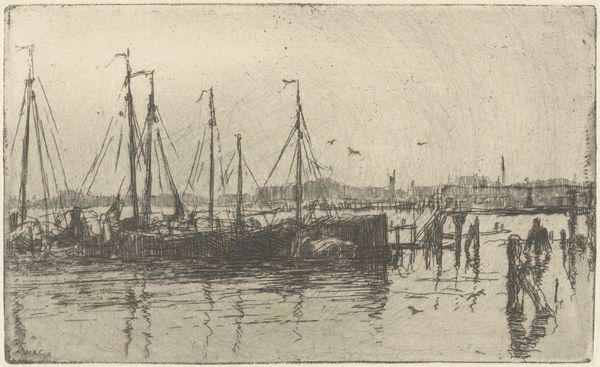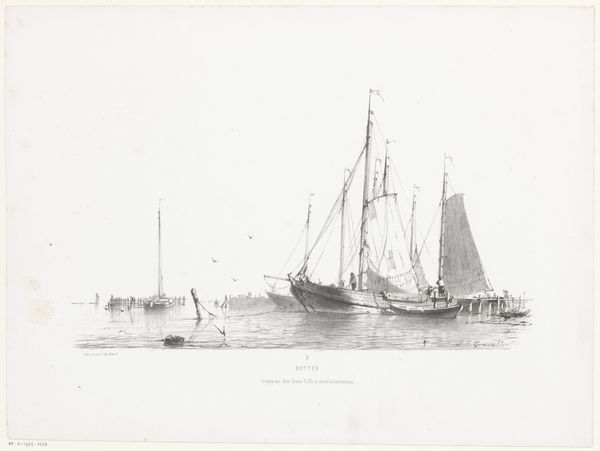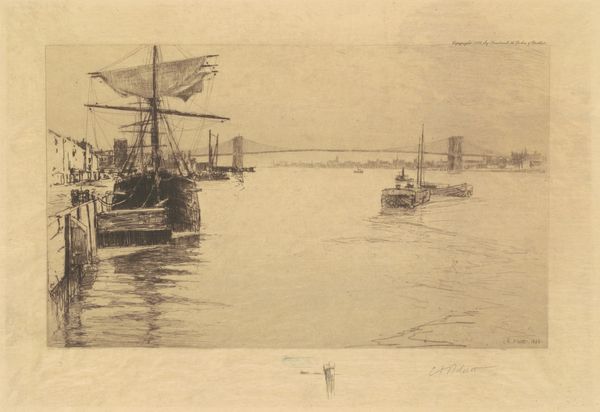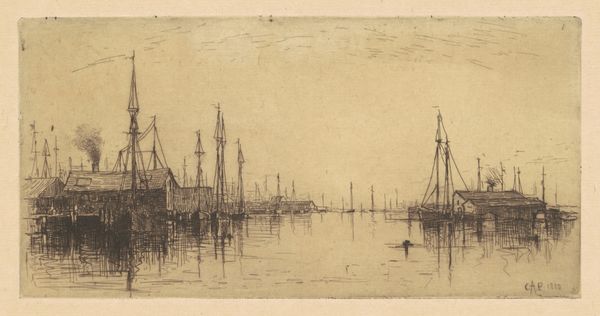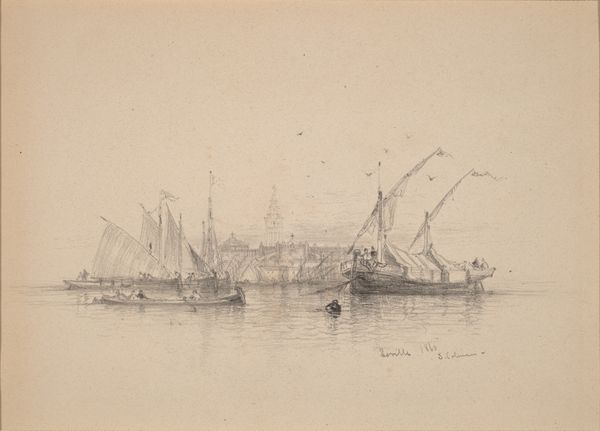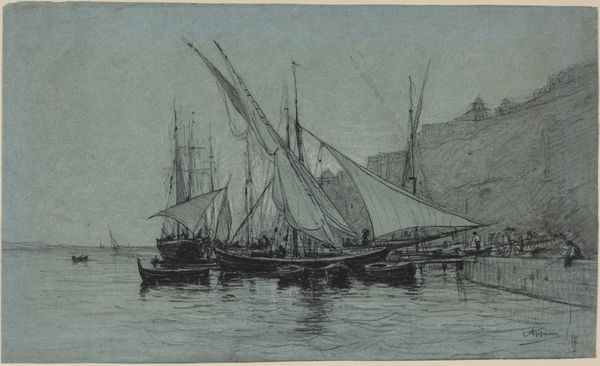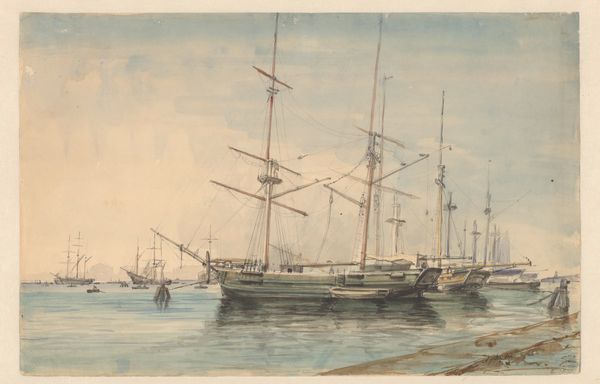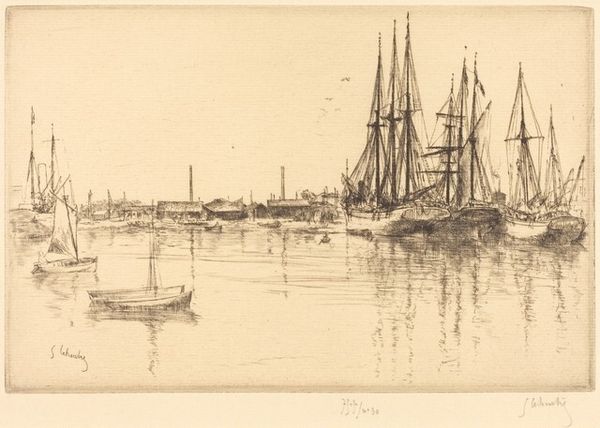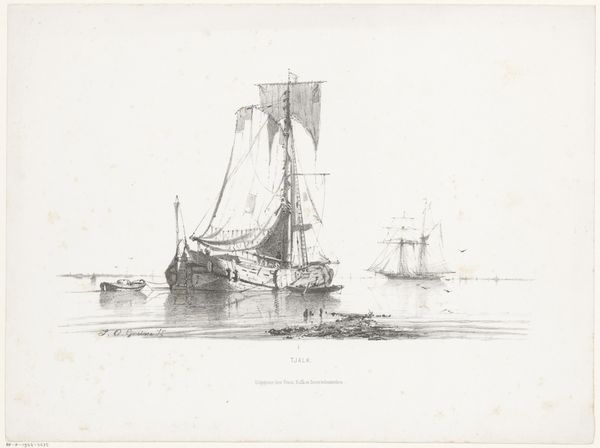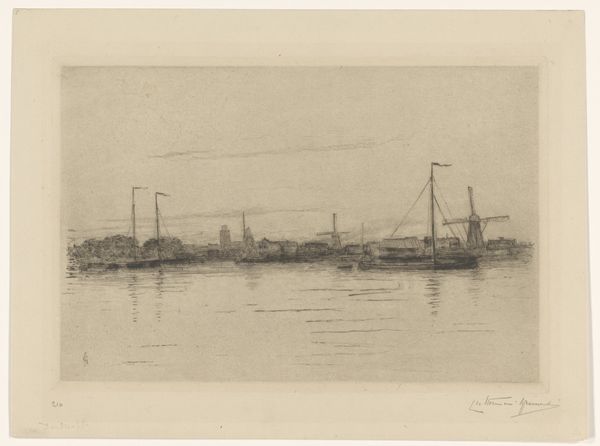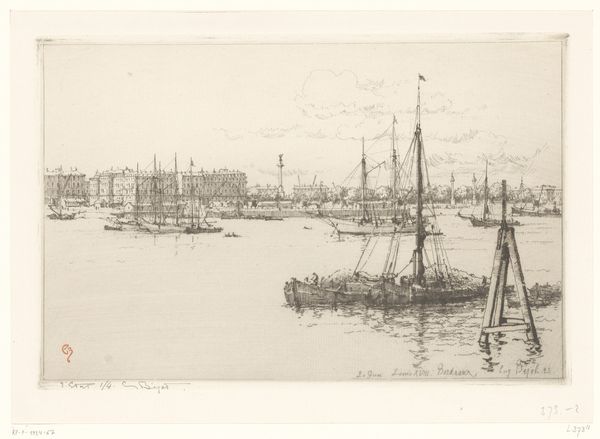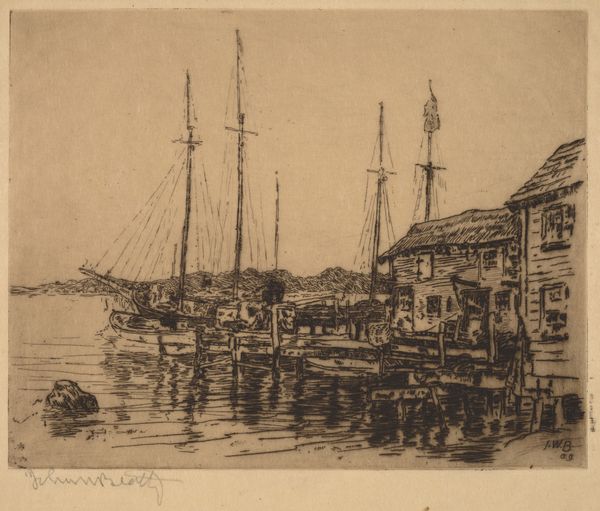
print, etching
# print
#
etching
#
pencil sketch
#
landscape
#
etching
#
cityscape
Dimensions: plate: 14.92 × 17.62 cm (5 7/8 × 6 15/16 in.) sheet: 20 × 26.35 cm (7 7/8 × 10 3/8 in.)
Copyright: National Gallery of Art: CC0 1.0
Curator: Charles A. Platt's etching, "Loading Up," created in 1881, offers a glimpse into the bustling energy of a 19th-century harbor. Editor: There's something almost delicate about this. The lines are so fine, capturing light reflecting on the water. It gives the scene a dreamlike, almost hazy quality, despite being quite industrial. Curator: That contrast is key. Platt's etching style, while reminiscent of traditional landscape art, also intersects with the rapidly changing industrial landscape. Harbor scenes like this were vital to urban economies, employing workers from various backgrounds. This image offers insight into maritime labor at the end of the 19th century. Consider the phrase “Loading Up.” For whom is this “loading up?” How might race, class, and gender be at play on this harbor? Editor: From a purely formal perspective, observe how he creates depth and volume with nothing but these lines. The density increases toward the foreground, especially within the ship hulls. Look at the masts—they punctuate the sky with this incredible lightness. There is great balance in how those tall, vertical lines interplay with the lower horizontals of the docks and vessels. It has an almost musical cadence to it. Curator: Right. It’s worth considering the context, though, the Gilded Age was underway in the U.S., a period of immense industrial expansion juxtaposed with pervasive social inequalities. Views like these harbor images often overlooked the labor that sustained such economic prosperity, instead emphasizing picturesque views of commerce. Editor: But, to remove the discussion from that entirely for a moment: think of the etcher’s mastery to communicate so much, so elegantly. And note how even the reflections in the water aren’t mere copies of what’s above; they are transformed, almost impressionistic renditions. Curator: Yes, Platt's skill is undeniable. Seeing the ships "loading up" prompts reflections on labor, commerce, and artistic license during a transformative period. Editor: A stunning exercise in balancing light, form, and depth; an impressive composition of line. I’ll keep coming back to its beauty and masterful technical execution.
Comments
No comments
Be the first to comment and join the conversation on the ultimate creative platform.
